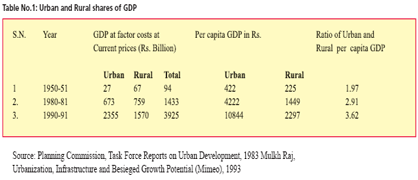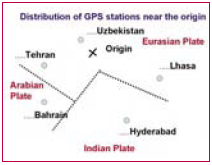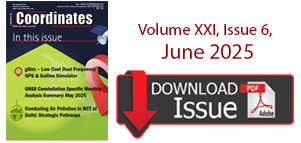Articles in the Mycoordinates Category

Indonesian military plane to map quake-hit areas
The Indonesian Defence Forces (TNI) have assigned a CN-235 airplane to carry out aerial photography on areas in the Yogyakarta region affected by 27 May 5.9-magnitude earthquake. The activity is aimed at making a detailed map of areas devastated by the quake.
TNI had also sent a Hercules C-130 plane carrying a TNI field medical team and three helicopters to evacuate victims. http://news.xinhuanet.com
Conquering a technology is always important.
Owning it adds an arsenal to the might of the nation.
Hence, there is a …

Limestone constitutes the predominant raw material for manufacturing clinker, which in turn is an intermediate product to produce cement. But if the deposit is not homogenous and the coeffi cient of variation (COV) of the main inherent radicals in limestone is very high then the consistency in the quality parameters of the product varies and so on the process requirements thereby affecting productivity. In such cases the deposit has to be understood statistically and a proper geological model should be designed to best fi t our mine design parameters. This paper deals in detail how surpac leads in solving a similar problem…

Rural development may be defined as structural changes in the socio-economic situation to achieve improved living standard of low-income population residing in rural areas and making the process of their development self sustained. It includes economic development with close integration among various sections and sectors; and economic growth specifically directed to the rural poor. In fact, it requires area based development…
Delhi faces confusion and chaos.
With a pressure to host Commonwealth games in 2010.
Unauthorized construction, encroachments, illegal …

The authors have continued a research on the prediction of earthquake using GPS data in Japan, one of the disaster prone countries since 2000. The authors have discovered pre-signals of those past big earthquakes with more than M6, such as Miyagi Offshore and Hokubu Earthquakes (2003.5.26; M7.1 and 7.26; M6.4), Tokachi Offshore Earthquake (2003.9.26; M8.0)…
Own, control, use and misuse.
That’s the story about information.
When search engines like Google, Yahoo and Micorsoft open new vistas …
The interface
Seventy per cent of India lives in villages.
And villages mean not ‘big’ problems but very ‘basic’ problems.
Where the question is to fulfi ll the basic needs such as food and shelter.
Where access to clean water, education and health facilities itself is an issue.
Where there is a struggle for survival on a daily basis.










 (5.00 out of 5)
(5.00 out of 5)